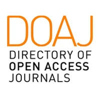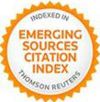Architecture and multisensory. A project of inclusion for the sensory impaired and a new approach of synaesthetic visit in existing architectural sites 
Abstract
From the conviction that space must be perceived by all the senses, an experimental degree thesis has been developed - at the end of the 5 years of study of Architecture at the Sapienza University in Rome - which analyzes and re-proposes the non-visual perception inherent in the human being but which, in today's society, is increasingly buried by the visual perception that instead grows in proportion to the spread of new technologies which aim to interact almost exclusively with the visual apparatus.
Keywords
Full Text:
PDFDOI: http://dx.doi.org/10.2423/i22394303v8n2p77
References
Ceppi, E. (1981). I minorati della vista. Storia e metodi educativi. Roma, Italy: Armando Editore.
Cigola, M, Gallozzi, A, Ceccarelli, M., & Carbone G. (2014) Strategie robotiche ed informatiche per la fruizione museale. SCIRES-IT - SCIentific RESearch and Information Technology, 4(1), 59-68.
Empler, T. (2012). Rappresentazioni da esplorare. XY Dimensioni del Disegno, 10(26), 61-62
Freides, D. (1974) Human information processing and sensory modality. Psychological Bulletin, 81(5), 284-310.
Gentaz, E. & Hatwell, Y. (1998). The haptic oblique effect in the perception of rod orientation by blind adults. Perception & Psychophysics, 60(1), 157-167.
Hatwell, Y. (1986). Toucher l'espace. La main et la perception tactile de l'espace. Lille: Presses Universitaires de Lille
Istituto dei Ciechi Francesco Cavazza (2016). Lo spazio del non vedente. www.cavazza.it/invitobraille/
Klatzky, R. L., Golledge, R. G., Loomis, J. M., Cicinelli, J. G., & Pellegrino, J. W. (1995). Performance of blind and sighted persons on spatial tasks. Journal of Visual Impairment & Blindness, 89, 70–82.
Kennedy, J. M. (1997). Come disegnano I ciechi. La Scienza, 97(343), 54-57.
Kennedy, J. (1993). Drawing and the blind: Pictures to touch. New Haven: Yale University Press.
Lacirignola, A. (2015). Il disegno per le mani: castello del Valentino in rilievo. Torino UICI-011. Rivista quadrimestrale dell’Unione Italiana dei Ciechi e degli Ipovedenti (sezione provinciale di Torino). 18 (1), sp.
Levi, F. (2015). L’accessibilità alla cultura per I disabili visivi. Storia e orientamenti. Torino, Italy: Zamorani.
Merleau-Ponty, M. (1989). L’occhio e lo spirito (Traduzione di A. Sordini). Torino, Italy: SE.
Millar, S. (1994). Understanding and representing space. Theory and evidence from studies with blind and sighted children. Oxford: Clarendon Press.
Rock, I., & Victor, J. (1964). Vision and touch: an experimentally induced conflict between the two senses. Science, 143, 594-596
Sainte-Exupérie, Antoine de. (1943). Le Petite Prince. Paris, France: Gallimar.
Vercellone, F. (2017). Il futuro dell’immagine. Bologna, Italy: Il Mulino.
Virga, G. (2014). Considerazioni sperimentali sulla rappresentazione mentale dello spazio nei non vedenti. Gruppo di Ricerca sull'Insegnamento/Apprendimento delle Matematiche. http://math.unipa.it/~grim/virga-nonvedenti.
Article Metrics
Metrics powered by PLOS ALM
Refbacks
- There are currently no refbacks.
Copyright (c) 2019 Giuliarosa Granata

This work is licensed under a Creative Commons Attribution-NonCommercial-NoDerivatives 4.0 International License.
SCIRES-IT, e-ISSN 2239-4303
Journal founded by Virginia Valzano




